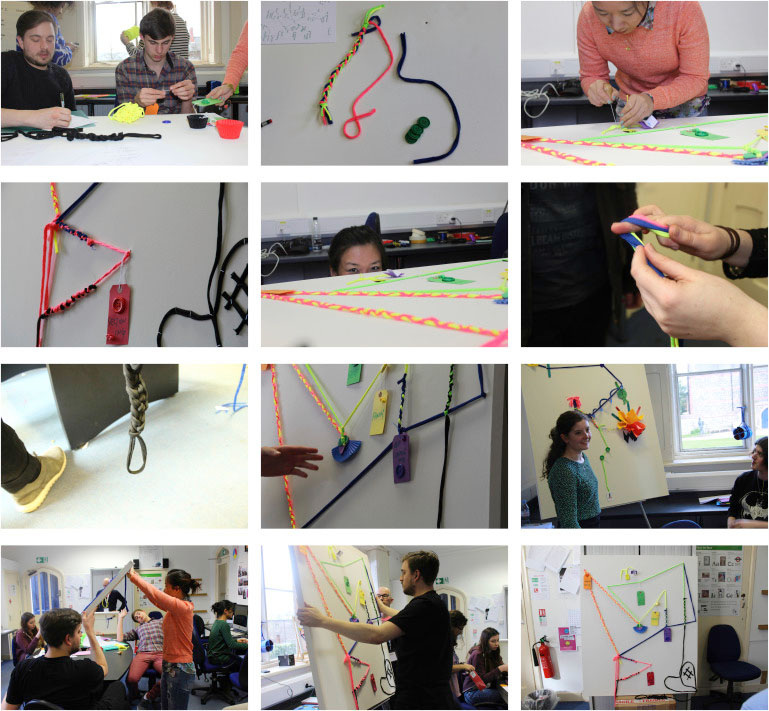Nick Bell, UAL Chair of Communication Design (2013-2016 Project), recruited UAL students to be part of a trans-disciplinary, cross-university ‘Early-Lab’ tasked with scoping out a new vision for the design of a local NHS youth mental health service provided by Norfolk & Suffolk NHS Foundation Trust (NSFT).
Nick has just had a paper published on his design research in youth mental health actioned through Early Lab in She Ji, the journal of design, economics and innovation (Tongji University).
Early Lab gave student designers the opportunity to be involved in processes early (long before they are usually invited) so that their contributions might have a greater chance to deliver resilient and sustainable outcomes. Trans-dsiciplinary, collaborative, complex socio-ecological challenges were met responsively with people where they were, in their enviroment.
Early-Stage Innovation Centered on Making for Youth Mental Health: A Design-Led Approach
By Nick Bell
Abstract
While the use of making in participatory co-design is common, I argue for the benefits that making-led participatory co-design can bring to two fields where its use is rare: early-stage innovation and mental health. I draw evidence from my situated cooperation with service users and providers of a regional UK mental health trust. The motivation for this action-research was twofold: to envision a better youth mental health service, and to explore how primary and secondary schools can practice mental health prevention. I observed that where there was an absence of co-making in a researcher’s stakeholder engagements, communicative exchanges became heavily verbal, and this increased the relational intensity between actors. As a result, the discussion of service user experiences—coping with mental health conditions and the struggle to access mental health services—became more challenging for contributors. By contrast, stakeholder engagements driven by co-making transcended the verbal. Making brought a level of informality that enabled participants to lighten relational intensity, soften professional/cultural boundaries, and open up to each other. A low-fidelity visualization is described that I propose can help maintain stakeholder agency and sustain relations between co-actors for the longer term.


